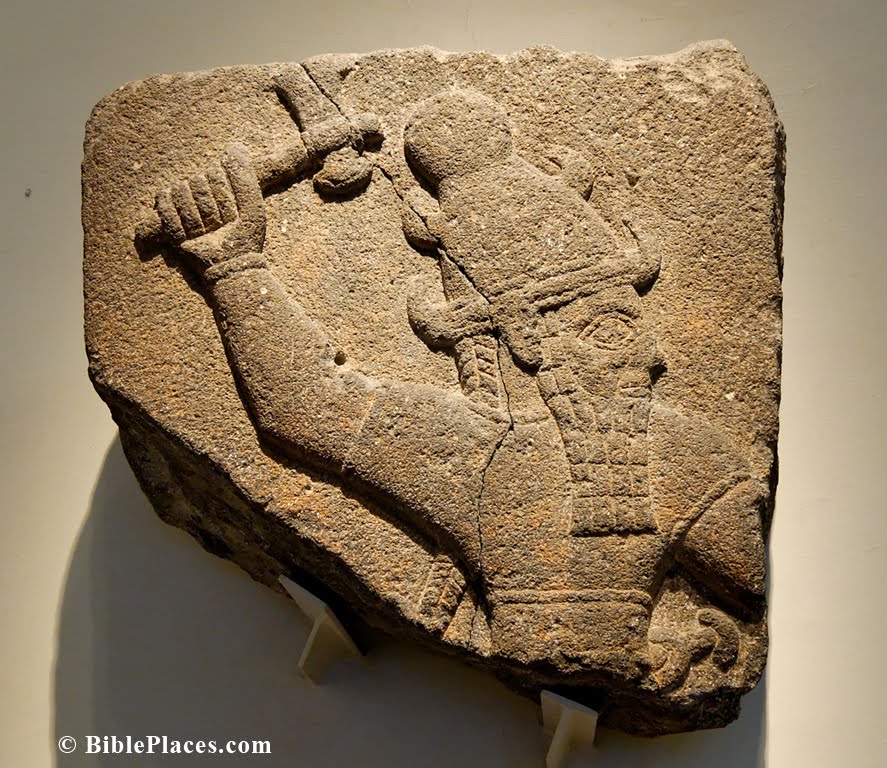A good bit has been written about the lead codices since my last serious post here on Thursday.
Some channels in the media continue to develop the story, though they generally ignore what scholars are writing on their blogs.
The Daily Mail is claiming that one of the codices has the earliest depiction of Jesus. You can take a look for yourself and see if you can make better sense of it than I can.
The article also reports that the owner of the 70 tablets is a Bedouin trucker named Hassan Saida who lives in the Israeli Arab village of Umm al-Ghanim near Mount Tabor. You can see a photo of his smiling mug in the article. That an allegedly illiterate man is the owner of these artifacts is certainly a surprise. If these items are forgeries (see below), one would expect that the owner is the forger looking to make a profit, but that seems very unlikely given Saida’s limited knowledge. If these are forgeries, they were made with sufficient skill to fool (at least briefly) several scholars. But then why would the forger sell them to Saida instead of wealthy international antiquities collectors? If Saida is trying to make a profit, why did he not (allegedly) accept tens of millions of dollars for a few of the codices? The story reports that Saida is the owner of a truck business and a relatively wealthy man in his village. His belief that the books had magical powers led him to purchase a few of the books at a time with the financial help of several partners.
Perhaps the claim of ownership is false and Saida is not the owner. Perhaps he is only playing this role on behalf of the true owner/forger in an attempt to remove doubts. At this point, Saida’s role may point to artifacts’ authenticity (but keep reading).
The Daily Mail also reports that analysis of the metal of several of the codices supports their antiquity. Yet the Israel Antiquities Authority allowed the items to be taken out of the country for analysis because they believed the items to be forgeries.
The role of the Elkingtons is described in a report in the Telegraph. A photograph shows these “archaeologists” in their “remote Gloucestershire hideaway,” and the story describes the threats on the couple’s lives, including guns fired at them near the scene of the discovery. If all of this sounds like a ready-made story for a book (with movie rights), then you won’t be surprised to learn that the Elkingtons’ literary agent is currently shopping their manuscript to publishers.
In order to determine the authenticity of the codices, the Elkingtons turned to Margaret Barker, a former president of the Society of Old Testament Study and an expert on early Christian studies.
While suspicious of forgeries, she recognized that counterfeits are usually based on something genuine, but these are unlike anything known today. Philip Davies, Emeritus Professor of Biblical Studies at Sheffield University, concluded that “if this is a hoax then it is incredibly elaborate.”
Yet it turns out that last year David Elkington had contacted Peter Thonemann, a lecturer on the Faculty of Classics at Oxford University. Thonemann analyzed photos of a bronze codex and determined that the writing was copied from a tombstone on display in the Archaeological Museum in Amman. The modern forger copied a line from the middle of the inscription that made no sense apart from the context. Thonemann concluded:
The only possible explanation is that the text on the bronze tablet was copied directly from the inscription in the museum at Amman by someone who did not understand the meaning of the text of the inscription, but was simply looking for a plausible-looking sequence of Greek letters to copy. He copied that sequence three times, in each case mixing up the letters alpha and lambda.
This particular bronze tablet is, therefore, a modern forgery, produced in Jordan within the last fifty years. I would stake my career on it.
If Elkington was interested in the truth, he would not have hidden this analysis when unveiling his grand discovery to the world last week. While it is possible that proving that one of the tablets is a forgery does not mean that they all are, it does not make sense that Elkington would send a known forgery to an expert for evaluation while holding back other authentic items. Nor does it seem likely that a smaller set of codices were discovered and then the finder decided to supplement them with a series of forgeries. While some bloggers are pointing to similarities in iconography, in my thinking this is less compelling evidence than the textual work of Thonemann because there are only so many ways that one can depict a palm tree and one would expect similar depictions from works composed about the same time.
Among the blog postings on the matter, in addition to those linked above, I would point you to Jim Davila’s “Random Thoughts,” Thomas Verenna’s “New Roundup,” Daniel McClellan’s photo comparisons, and Ferrell Jenkins’ observations on the Kinderhook Plates.
I also recommend Jim Davila’s observations on the mainstream media’s mode of operation, James McGrath’s recognition of the value of the biblioblogging community, and Michael Heiser’s warning to those who believe everything they read.
